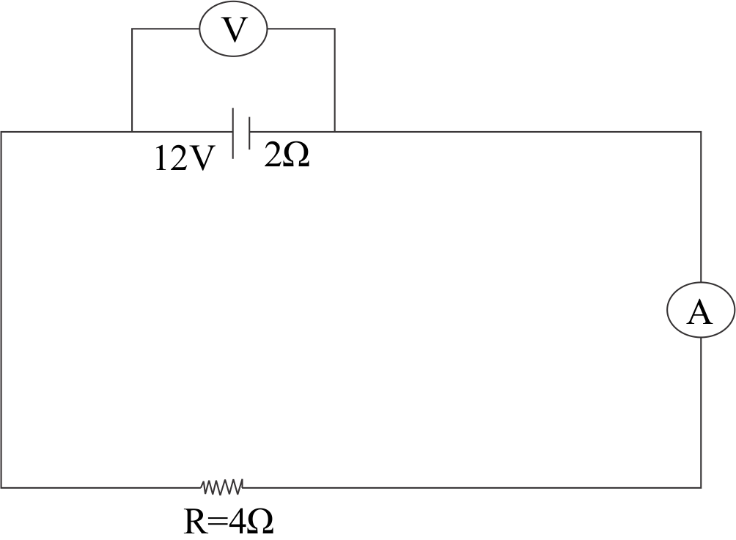Question
Question: (a) The potential difference applied across a given resistor is altered so that the heat produced pe...
(a) The potential difference applied across a given resistor is altered so that the heat produced per second increases by a factor9. By what factor does the applied potential difference change?
(b) In the figure shown, an ammeter A and a resistor are 4Ω connected to the terminals of the source. The emf of the source is 12V having an internal resistance 2Ω. Calculate the voltmeter and ammeter reading.

Solution
Electric potential could be a location-dependent amount that expresses the number of potential energy per unit of charge at such location. Once a Coulomb of charge (or any given quantity of charge) possesses a comparatively great quantity of potential energy at a given location, then that location is alleged to be a location of high electric potential. And equally, if a Coulomb of charge (or any given quantity of charge) possesses a comparatively tiny amount of potential energy at a given location, then that location is alleged to be a location of low electric potential.
Formula used:
Heat produced,
⇒H=RV2t
Where, His the heat produced, Vis the voltage, tis the time, and Ris the resistance.
Voltmeter,
⇒V=R−IR
Where, R is the resistance, and I is the ammeter.
Complete step by Step Solution In this question, the heat is altered and that causes the heat produced by is 9 times its initial.
So they are asking the factor for which the applied potential difference changes.
(a). Suppose the original potential difference applied to be V and the original heat produced will be H.
Then,
⇒H=RV2t
Now the new potential difference will be V′ and the heat produced after the change is H′
Then, we can write the equation as
⇒H′=RV′2t
According to the question statement,
⇒H′=9H
Now we will put the values of both the heat,
We get
⇒RV′2t=9×RV2t
On further solving this equation, we get
⇒V′2=9V2
Which implies,
⇒V′=3V
Therefore we can say that the potential difference is increased by a factor 3.
(b). Let us consider the voltmeter and the ammeter to be in an ideal state.
Here the total resistance R will be equal to
⇒R=4+2
⇒6Ω
Then the ammeter reading will be,
⇒I=RV
⇒I=612
⇒2A
Hence the ammeter reading will be2A.
Now we will calculate the voltmeter required,
⇒V=R−IR
Substituting the values, we get
⇒12−2×2
⇒12−4
⇒8V
Therefore the voltmeter reading will be 8V.
Note: Voltmeters and ammeters measure the voltage and current, severally, of a circuit. Some meters in automobile dashboards, digital cameras, cell phones, and tuner-amplifiers are voltmeters or ammeters.
